I decided to pull out my Nikon D800 and AF-S 60mm f/2.8G Macro to take some high resolution close-up shots of the LEDs in some of my lights. Thought I'd share these since I think they turned out pretty cool! 
I am posting small, 640 pixel wide images, but each one has a link below to open a large 4000 pixel wide version for closer scrutiny. The filenames reflect which flashlight was photographed. All were synchronized with the same white balance but they are not to scale with each other. I made no effort to ensure that the emitter itself was the same distance from the camera, since that would have been pretty much impossible to do with any sort of real accuracy anyway.
Similar to my ceiling beam-shot photos, the dynamic range has been enhanced dramatically to not only show detail in the lit part of the LED but all the surrounding area too. All lights had their output set to minimum, except the Predator Pro, which was up one notch. I augmented some of the shots by shining my SRT7 in to light up the area behind the emitters a tiny bit. This was most effective on the Thrunite TN32 since it has such a wide reflector and it was easy to get the light past the barrel of the macro lens and down into the bottom of the reflector. Some additional observations follow...
To the naked eye, the MT-G2 LED is pretty darn cool looking, but up close it is quite rough, easily the "ugliest" of the bunch! You can see slight centering issues on many of the LEDs. The TN32 has a slight grey spot on the emitter, a defect in the phosphor coating maybe? There are also many out-of-focus blobs visible in the shot of the TN32, and those are slight bubbles or defects in the reflector that are in front of the very narrow plane of focus.
I have to give SupBeam, NiteCore and ArmyTek kudos for having the cleanest overall LED assemblies and reflectors when compared to most of my other lights! :thumbsup: There is virtually no dust internally, the LEDs themselves are reasonably dust free and the surrounding areas are nearly spotless. The other lights look surprisingly dusty in comparison as you'll clearly see when examining the high-res shots!
Of course the dust or slight marks on the reflectors will not affect the light in any significant way whatsoever, but it is just surprising to me to see some of them look so darn filthy up close! Now onto the photos...
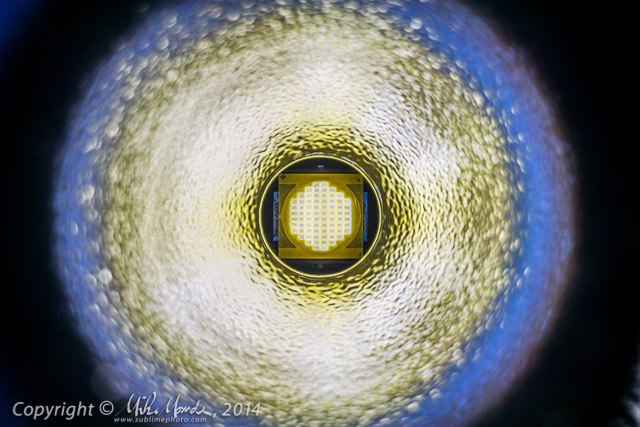
MX25L3 high-res: http://www.sublimephoto.com/blogimages/2014-01/emitters/EagleTac_MX25L3_MT-G2.jpg
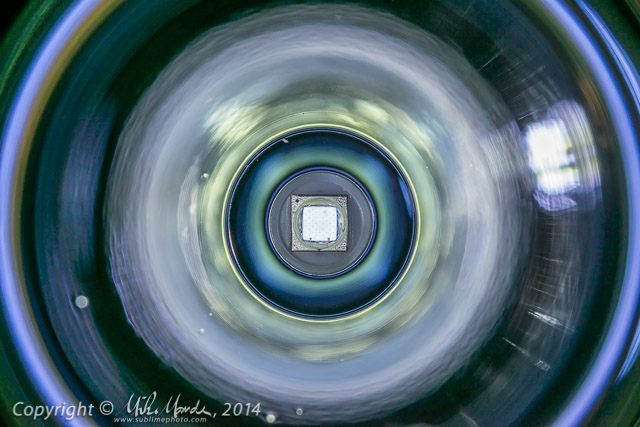
TN32 high-res: http://www.sublimephoto.com/blogimages/2014-01/emitters/Thrunite_TN32_XM-L2.jpg
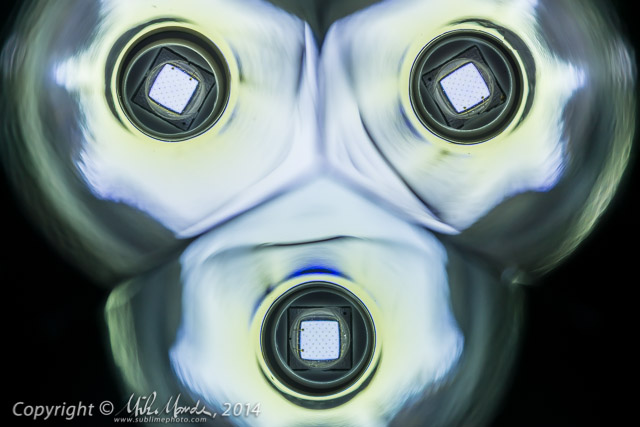
X40 high-res: http://www.sublimephoto.com/blogimages/2014-01/emitters/SupBeam_X40_XM-L2.jpg
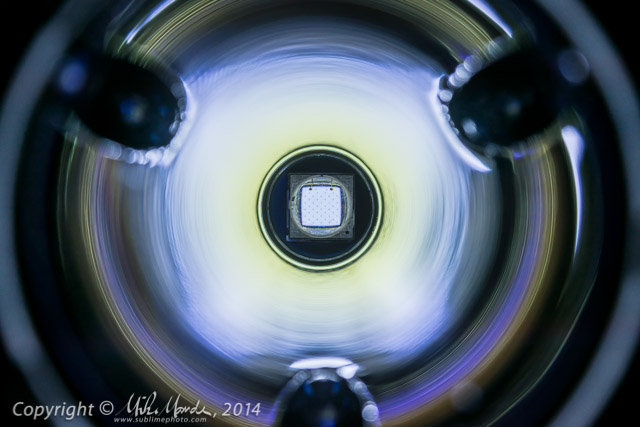
SRT7 high-res: http://www.sublimephoto.com/blogimages/2014-01/emitters/NiteCore_SRT7_XM-L2.jpg
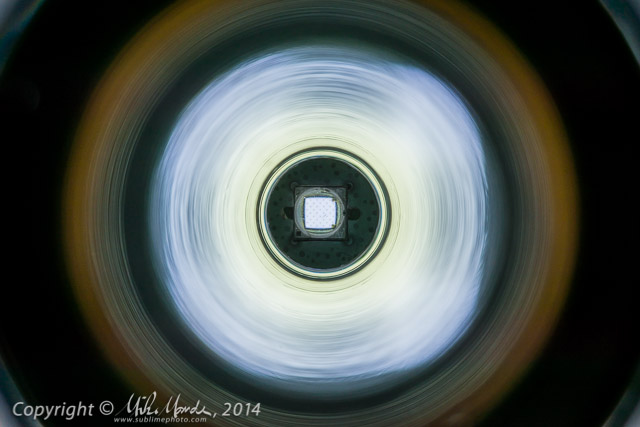
Predator Pro high-res: http://www.sublimephoto.com/blogimages/2014-01/emitters/ArmyTek_PredatorPro_XP-G2_Cool.jpg
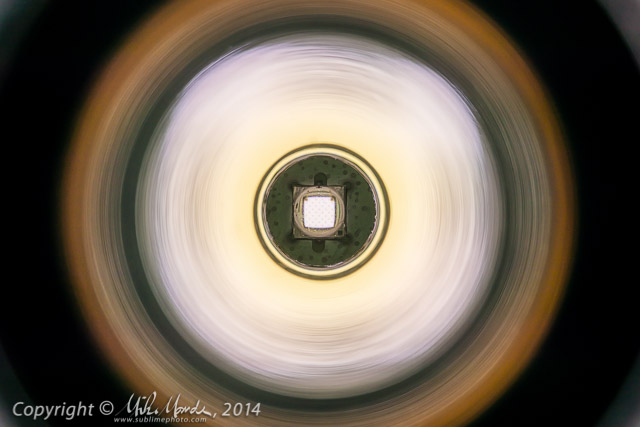
Predator (warm) high-res: http://www.sublimephoto.com/blogimages/2014-01/emitters/ArmyTek_Predator_XP-G2_Warm.jpg
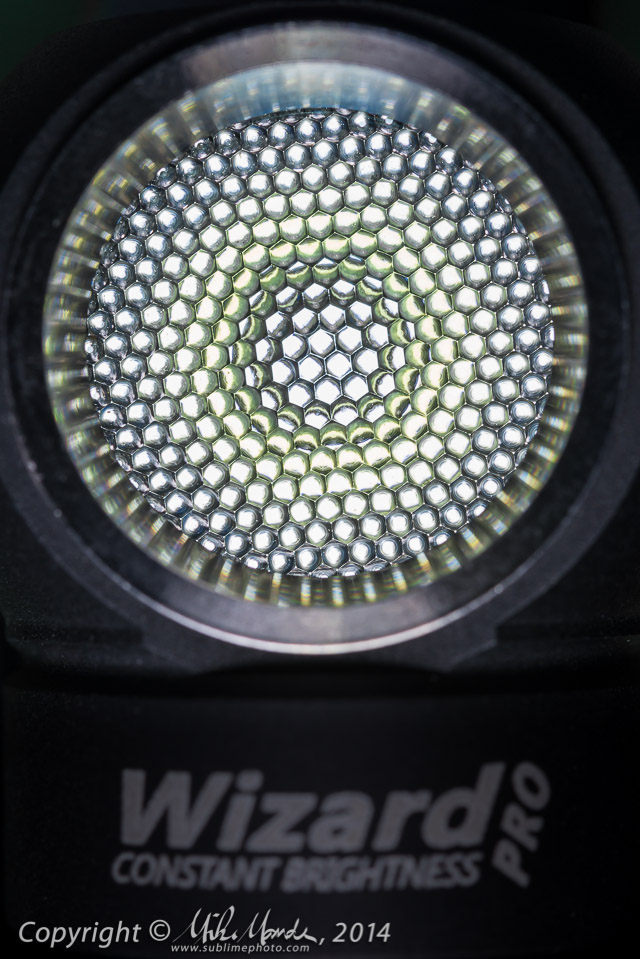
Wizard Pro Wide high-res: http://www.sublimephoto.com/blogimages/2014-01/emitters/ArmyTek_WizardPro_Wide.jpg
I am posting small, 640 pixel wide images, but each one has a link below to open a large 4000 pixel wide version for closer scrutiny. The filenames reflect which flashlight was photographed. All were synchronized with the same white balance but they are not to scale with each other. I made no effort to ensure that the emitter itself was the same distance from the camera, since that would have been pretty much impossible to do with any sort of real accuracy anyway.
Similar to my ceiling beam-shot photos, the dynamic range has been enhanced dramatically to not only show detail in the lit part of the LED but all the surrounding area too. All lights had their output set to minimum, except the Predator Pro, which was up one notch. I augmented some of the shots by shining my SRT7 in to light up the area behind the emitters a tiny bit. This was most effective on the Thrunite TN32 since it has such a wide reflector and it was easy to get the light past the barrel of the macro lens and down into the bottom of the reflector. Some additional observations follow...
To the naked eye, the MT-G2 LED is pretty darn cool looking, but up close it is quite rough, easily the "ugliest" of the bunch! You can see slight centering issues on many of the LEDs. The TN32 has a slight grey spot on the emitter, a defect in the phosphor coating maybe? There are also many out-of-focus blobs visible in the shot of the TN32, and those are slight bubbles or defects in the reflector that are in front of the very narrow plane of focus.
I have to give SupBeam, NiteCore and ArmyTek kudos for having the cleanest overall LED assemblies and reflectors when compared to most of my other lights! :thumbsup: There is virtually no dust internally, the LEDs themselves are reasonably dust free and the surrounding areas are nearly spotless. The other lights look surprisingly dusty in comparison as you'll clearly see when examining the high-res shots!
Of course the dust or slight marks on the reflectors will not affect the light in any significant way whatsoever, but it is just surprising to me to see some of them look so darn filthy up close! Now onto the photos...

MX25L3 high-res: http://www.sublimephoto.com/blogimages/2014-01/emitters/EagleTac_MX25L3_MT-G2.jpg

TN32 high-res: http://www.sublimephoto.com/blogimages/2014-01/emitters/Thrunite_TN32_XM-L2.jpg

X40 high-res: http://www.sublimephoto.com/blogimages/2014-01/emitters/SupBeam_X40_XM-L2.jpg

SRT7 high-res: http://www.sublimephoto.com/blogimages/2014-01/emitters/NiteCore_SRT7_XM-L2.jpg

Predator Pro high-res: http://www.sublimephoto.com/blogimages/2014-01/emitters/ArmyTek_PredatorPro_XP-G2_Cool.jpg

Predator (warm) high-res: http://www.sublimephoto.com/blogimages/2014-01/emitters/ArmyTek_Predator_XP-G2_Warm.jpg

Wizard Pro Wide high-res: http://www.sublimephoto.com/blogimages/2014-01/emitters/ArmyTek_WizardPro_Wide.jpg

